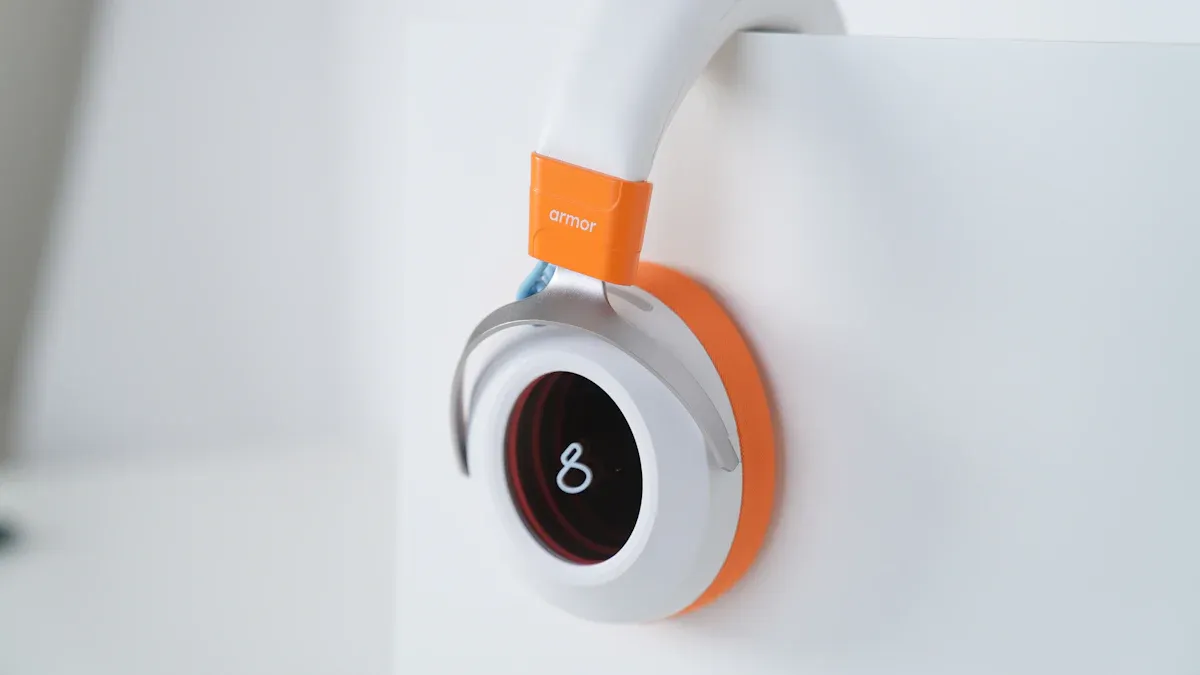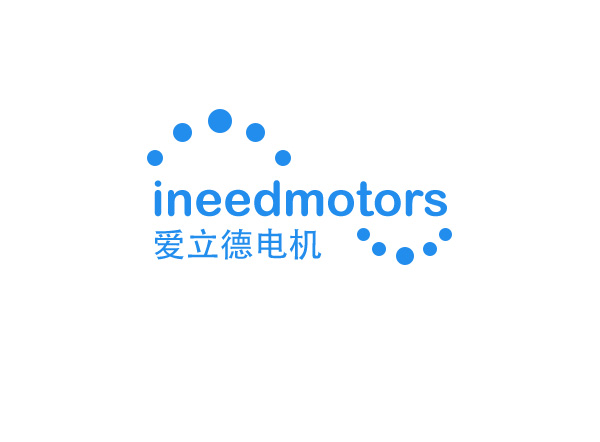What is Haptic Feedback and How LRA Vibration Motors Power It

When you use your phone or smartwatch, you might feel a soft buzz or tap. This is called haptic feedback. It gives you a real feeling when you do something on your device. Linear Resonant Actuator (LRA) vibration motors help make these feelings. You notice haptic feedback because it helps you use your device better and makes you happier.
The haptic market was worth $4.8 billion in 2023 and may grow to $13.7 billion by 2030.
Consumer electronics and wearables use haptic technology the most for better feedback.
Recent reports say that LRA vibration motors now power most new haptic technology in smartphones and wearables. Companies pick LRAs because they give sharp feedback and save energy. This gives you a more real touch feeling.
Key Takeaways
Haptic feedback lets you feel things when you touch your device. This makes your device easier and more fun to use.
LRA vibration motors make fast and sharp vibrations. These vibrations use less energy and feel more real than old motors.
Devices with LRA motors react quickly and save battery. This helps your phone or watch work longer.
LRA technology makes phones, games, VR, cars, and medical tools better. It gives clear and exact feedback in these devices.
Picking devices with LRA haptic feedback gives you better control. You get faster responses and a more real touch every day.
Haptic Feedback Basics
What Is Haptic Feedback
You use digital devices every day. When you touch a screen or press a button, you might feel a small buzz or tap. This is called haptic feedback. It lets your device send you signals you can feel. There are two main types of haptic feedback: tactile feedback and kinesthetic feedback. Tactile feedback gives you feelings on the surface, like a soft buzz or a quick tap. Kinesthetic feedback makes your muscles or joints feel movement.
Haptic systems use different technologies:
Vibration motors like LRA and ERM make simple or exact feedback.
Ultrasonic haptics let you feel fake objects without touching them.
Electrostatic haptics change how smooth a touchscreen feels, so you can feel different textures.
Modern devices use haptic feedback to make digital actions feel real. You notice it when you type on a screen keyboard or play a game. Haptic feedback helps you know when you finish an action, even if you do not see or hear anything.
User Experience Benefits
Haptic feedback helps you in many ways. It makes using devices feel more normal and fun. Studies show that haptic feedback can help you react faster and make fewer mistakes. For example, people using teleoperated robots finished jobs faster and made fewer errors when they had haptic feedback. The table below shows how haptic feedback changes how well you do:
Variable | Result with Haptic Feedback | What It Means |
|---|---|---|
Efficiency | Fewer errors | You make fewer mistakes |
Effectiveness | Faster task completion | You finish tasks more quickly |
Mental Workload | Lower workload | You feel less tired or stressed |
Haptic feedback also helps you pay attention. In virtual reality, people feel more part of the experience when they get both sound and haptic feedback. Even in cars, haptic feedback can help you react faster and drive safer because you do not have to look away from the road. You get clear, quick signals that help guide you and keep you focused.
Haptic Technology in Devices
How Haptic Actuators Work
Have you ever wondered how your device lets you feel touch? Haptic actuators make this happen. When you tap a screen or press a button, your device sends a signal to the haptic actuators. These actuators turn the signal into movement. You feel this as a buzz, force, or a soft tap.
Haptic actuators come in many designs. Some use tiny motors that spin or move a weight. Others use smart materials or special fluids. Each kind makes feedback in its own way. For example, a magnetorheological fluid-based actuator can give a strong or soft touch, depending on how it moves. Devices like gloves or smart screens use these actuators to give real feelings. How well haptic vibration works depends on the actuators and motors working together. Fast control and tough materials help feedback feel quick and real. If motors are slow or get worn out, you might feel weak or slow feedback.
Note: Haptic actuators work like translators. They turn digital commands into feelings you can sense. This lets you "feel" what happens in your device.
Vibration Motors and Tactile Sensations
Vibration motors are very important for haptic feedback. You find them in phones, watches, and game controllers. There are different types, like ERM, LRA, VCA, and piezoelectric. Each type gives a different feeling. For example, ERM motors spin a weight to make a rumble. LRA motors move a weight back and forth for sharp, quick feedback. Piezoelectric actuators use special crystals to make fast, exact vibrations.
Simple vibration motors give basic alerts. You might feel a buzz when you get a message. Advanced haptic actuators can do more. They control how strong, fast, or patterned the vibration is. This lets you feel textures, shapes, or even movement. Devices with advanced haptic feedback can make it feel like you are touching real things. They use more than one actuator to make complex patterns. This makes the feedback feel more real and less tiring.
Feature | Simple Vibration Motors | Advanced Haptic Actuators |
|---|---|---|
Vibration Pattern | Basic, uniform | Complex, varied |
Sensation Quality | Simple buzz | Realistic touch |
Control | Limited | Precise |
Comfort | Can feel harsh | Feels natural |
You get more from advanced haptic technology. It makes digital things feel real. The right mix of vibration and haptic motors gives feedback that is helpful and fun.
LRA Haptic Actuators

LRA Structure and Operation
Have you ever wondered why the feedback in your devices feels so real? This happens because of how a linear resonant actuator works. Inside, there is a small mass on a spring. When your device sends an AC signal, the mass moves back and forth in a straight line. This movement makes the exact vibration you feel as haptic feedback.
The spring-mass system lets the actuator vibrate at its own frequency. This gives strong feedback but does not use much energy. These actuators start up in about 40 to 60 milliseconds. If you want the vibration to stop fast, the device can send a special braking signal. This makes the feedback feel sharp and quick.
Some advanced haptic actuators use a two-degree-of-freedom design. They do not need a mechanical spring because the magnetic force acts like a spring. The structure usually has a stator, a moving core, coils, and magnets. The magnets and coils work together to move the mass smoothly and quietly. Engineers use computer models and simulations to check the design. These tools help control the movement and keep the actuator small and efficient.
Tip: The spring-mass system in LRAs lets you feel fast, strong, and accurate vibrations. This is why your phone or watch can give you a tap that feels almost like a real button.
Here is a table that shows some technical details of a modern LRA haptic actuator:
Aspect | Details |
|---|---|
Actuator Type | Two-degree-of-freedom Linear Resonant Actuator (no mechanical spring) |
Structure | Stator, moving core, three-phase coils, magnets (N–S on moving core) |
Dimensions | Diameter: 52 mm; Height: 23 mm; Air-gap: 0.5 mm |
Detent Force | Acts as spring stiffness; centers mass at origin |
Motion Control | Sensorless position estimation; supports many motion patterns |
Analysis Methods | Finite element analysis and dynamic simulation |
Advantages | Resonance without springs, small size, multi-directional control |
You get fast, energy-saving, and real haptic feedback because of this smart design.
LRA vs ERM Motors
You might wonder why companies pick LRAs instead of other vibration motors. The main reason is how each motor makes vibration and how it feels to you.
Eccentric Rotating Mass motors use a spinning weight to make vibration. When you turn on an ERM motor, the weight spins and shakes the device. This gives a simple buzz, but it is not very exact. The vibration can feel rough or noisy. ERM motors also use more power and wear out faster because of the moving parts.
LRAs use a linear motion. The mass moves up and down, not in a circle. This gives you a smoother, sharper, and more controlled vibration. LRAs reach their top vibration in about 25 milliseconds. They use less power and last longer because they have fewer moving parts. You also get more control over the vibration pattern, so you can feel different types of feedback, not just a buzz.
Here is a table that compares LRAs and ERM motors:
Attribute | LRA (Linear Resonant Actuator) | ERM (Eccentric Rotating Mass) |
|---|---|---|
Response Time | ~25 ms to peak frequency | Immediate, but less controlled |
Vibration Type | Linear oscillation (up/down) | Rotational vibration |
Frequency Range | Narrow (170-180 Hz) | Wide range |
Power Consumption | Low (about 2V) | Higher |
Vibration Quality | Crisp, precise, smooth, quiet | Less precise, noisier |
Durability | Long lifespan | More wear and tear |
Control Flexibility | Fine control with AC signals | Less precise, uses DC signals |
LRAs give you a more real and enjoyable haptic experience.
ERM motors work for simple alerts, but they cannot match LRAs.
Device makers use LRAs in phones and wearables because you want fast, clear, and energy-saving feedback.
When you use a device with an LRA, you can tell the difference. The feedback feels like a real tap or click, not just a buzz. This is why LRAs are now the top choice for haptic technology.
LRA Advantages for Haptic Feedback
Precision and Responsiveness
You want your device to react fast when you touch it. LRA haptic actuators make this happen. These motors move a small mass in a straight line. This lets them make sharp and controlled vibrations. When you press a button or swipe, the feedback feels crisp and real. LRAs reach their top vibration in just a few milliseconds.
Researchers have tested how LRAs work in real devices. For example, in a vibrotactile glove, the motors vibrate at about 235 Hz. They respond in only 32 milliseconds. This quick action means you feel every tap or buzz right away. Engineers use special tools and computer models to check how well these actuators work. These tests show that LRAs can control both the strength and speed of the vibration. This makes your feedback more accurate than with older motors.
When you use a device with LRA haptic actuators, you can tell the difference. The feedback feels like a real tap, not just a dull buzz.
This precision helps you in many ways. You can type faster and play games better. You also enjoy more lifelike experiences in virtual reality. The quick response helps you avoid mistakes because you get instant signals.
Energy Efficiency
You care about battery life in your devices. LRA haptic actuators help save energy and still give strong feedback. These motors use less power than older ERM motors. They only move the mass at the exact frequency needed. This smart design means the actuator does not waste energy.
When you use a device with LRA motors, your battery lasts longer. The motors only turn on when needed and stop quickly. This keeps your battery from draining too fast. This is important for devices you use all day, like smartwatches or fitness trackers. You get rich haptic feedback without charging your device too often.
Here is a quick comparison:
Feature | LRA Haptic Actuators | ERM Motors |
|---|---|---|
Power Use | Low | High |
Battery Impact | Minimal | Drains faster |
Feedback Quality | Precise, sharp | Basic, rough |
You get strong, clear feedback and longer device use.
Enhanced Tactile Quality
You want your device to feel natural and comfortable. LRA haptic actuators give you feedback that feels more like real touch. These motors can make many different vibration patterns. You can feel soft taps or strong pulses. This helps you tell alerts, messages, or game actions apart.
Studies show that LRAs give more consistent and accurate feedback than ERM motors. In one test, people finished tasks faster and felt more aware when using devices with advanced haptic actuators. Most users liked the improved system, and 82% preferred it over older versions. This shows that better tactile quality makes your experience smoother and more fun.
You feel more connected to your device.
You notice small differences in feedback, which helps you react faster.
You enjoy using your device longer without discomfort.
Tip: Devices with LRA haptic actuators can help in cars or medical tools, where clear and reliable feedback is very important for safety and accuracy.
You get a more real and satisfying experience every time you use your device. The smart design of these motors means you can trust your device to give you the right feedback at the right time.
Real-World Uses of LRA Haptic Technology
Smartphones and Wearables
You use your phone and watch every day. You want them to feel quick and real. LRA vibration motors help your devices give sharp feedback. Every tap or alert feels more natural with LRAs. These motors work faster than old ones. They also use less power. This means your battery lasts longer. Your touch feels better and more satisfying.
Performance Metric | LRA Characteristics | ERM Comparison |
|---|---|---|
Response Time | 20-50 ms | 100-200 ms |
Power Consumption | Lower, saves battery | Higher |
Acceleration | Higher, feels stronger | Lower |
Control Mechanism | Precise, uses driver chips | Simple, less control |
You can tell the difference with features like the Taptic Engine. LRAs make your notifications and controls feel crisp. That is why most new phones and wearables use LRA haptic technology.
Gaming and VR Devices
You want games to feel real and fun. LRA vibration motors in controllers let you feel every crash or jump. These controllers use LRAs for sharp, lifelike feedback. In VR games, haptic suits and controllers use vibrations to match the action. This makes you feel like you are inside the game.
Gaming controllers use LRAs to copy impacts and moves.
VR haptic suits send vibrations to your body for each event.
You feel more connected and part of the game.
Studies show haptic feedback in VR makes games more fun. The feedback helps you react faster. It also makes the virtual world feel real. You can trust your controllers to give the right signals.
Automotive and Medical Applications
You want safety and accuracy in cars and medical tools. LRAs give clear, reliable feedback in these areas. In cars, LRAs help you control screens and safety features. You get quick alerts that help you stay focused. In medical devices, LRAs give precise feedback for tools like surgical robots. This helps doctors and nurses work safely and well.
Cars use LRAs for touchscreens, buttons, and safety alerts.
Medical tools use LRAs for accurate, energy-saving feedback.
Companies like Murata and Parker Hannifin make LRAs for these uses.
Note: LRAs keep getting smaller and better, so you see them in more places every year.
You count on LRA vibration motors for strong, clear feedback in many devices. These motors help you get quick and accurate signals in phones, cars, and medical tools. Companies pick LRAs because they make feedback better and use less energy. New studies say deep learning and big data will make LRA-based devices even smarter. In emotion recognition, LRA-DNN models can reach 94.77% accuracy. This means human-computer interaction feedback will get even better. As technology improves, you will notice more advanced feedback in things you use every day. Think about how feedback changes your experience with these devices.
FAQ
Why do most smartphones use LRA vibration motors for haptic feedback?
LRA motors give you quick and sharp feedback. They use less energy and last longer than other motors. This means your phone feels better to use. Your battery also lasts longer.
Why does haptic feedback feel more realistic with LRAs?
LRAs make vibrations that feel like real touches. You can feel soft taps and gentle pulses, not just a buzz. This makes your device easier and more natural to use.
Why should you care about energy efficiency in haptic motors?
Motors that save energy help your battery last longer. You can use your phone or watch all day without charging as much. LRAs give strong feedback but do not waste power.
Why do LRAs improve gaming and VR experiences?
You feel every move right away in games or VR. LRAs give fast and clear feedback, so you react quickly. This makes games and VR feel more real and fun.
Why are LRAs better for safety in cars and medical devices?
LRAs give clear feedback you can trust. You notice alerts fast, which helps keep you safe. In medical tools, good feedback helps doctors do their jobs well.
See Also
Understanding The Technology Powering Wearable Vibration Bracelets
Maximizing Efficiency By Tuning Resonance Frequency In LRA Motors
Exploring Haptic Feedback: Uses, Advantages, And Emerging Trends
A Guide To ERM Motor Components, Types, And Practical Uses
Evaluating 12V Vibration Motors: Benefits, Drawbacks, And Best Uses
Get Custom Micro DC Motors from
INEED Motors!
Leading Brand in Vibration Motor Manufacturing Industry
